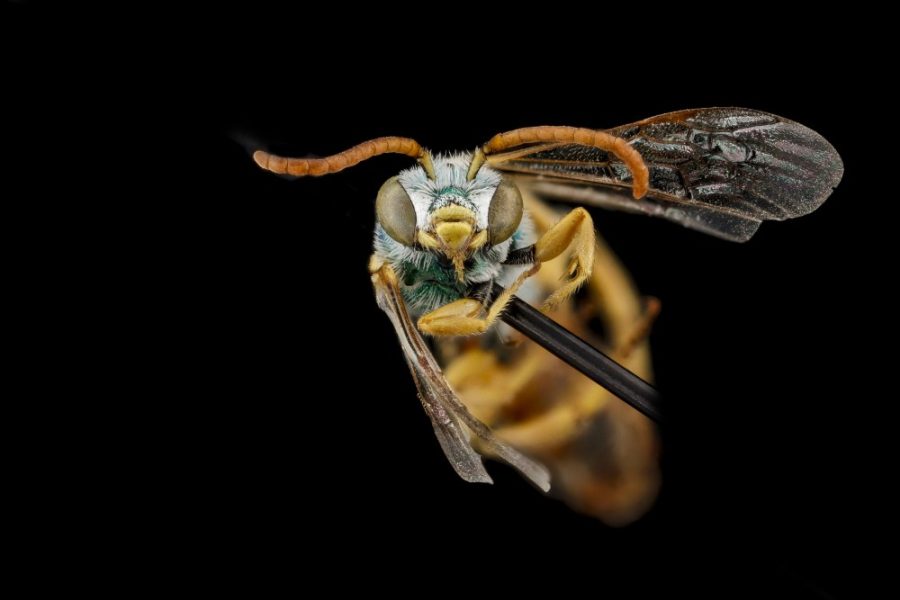The Pollinator Paradise booth at the Oct. 1 Arizona Insect Festival was buzzing with excitement as adults and children alike discovered the importance of pollinators.
Pollinators are animals that pollinate plants. Kaitlyn Mathis, postdoctoral researcher at the Center for Insect Science, described why pollination is so essential to the world:
“There’s a mutualism between pollinators and plants,” Mathis said. “Low pollinator abundance means less cross-pollination between plants, which means fewer seeds.”
Produce found in grocery stores is thus tied directly to pollinators.
“Seventy percent of crops require animal pollination,” said Gordon Smith, a graduate student in the College of Ecology and Evolutionary Biology.
Smith used almond cultivation in California as an example: Honeybees must be brought in by the truckload in order for the almond trees to be pollinated. Bees are common pollinators, especially in the Sonoran Desert. According to a bulletin at FWS.gov, the area around Tucson is home to 1,000 species of native bees.
“We live in a bee biodiversity hotspot,” Smith said.

RELATED: Seasonal hurricane predications on point
But around the world, bees and other pollinators like moths and butterflies are under threat. Daniel Papaj, professor in the College of Ecology and Evolutionary Biology, gave a number of reasons why.
“Pesticides called neonicotinoids have been shown to have some significant effects on bees,” Papaj said. “We need pesticides, but we’ve got to somehow manage them with the use of bees for pollination.”
Additionally, honeybees have been negatively impacted by Colony Collapse Disorder, as well as the Varroa destructor mite.
“That’s one of the reasons we’re studying not only honeybees but also native pollinators,” Papaj said.
Native pollinators may fill in the gaps left by affected honeybee populations, using for example, the process of hydroponic tomato growing in Wilcox, Arizona.
“Honeybees won’t even pollinate the tomatoes, but bumblebees will,” Papaj said. “Bumblebees are grown commercially to pollinate the tomatoes.”
RELATED: When tech is too much
But the need for pollinators is not limited to food crops. Cotton and many other plants rely on insect pollinators for reproduction.
“Some of the flowers depend on these native pollinators,” Papaj said. “If we lose the pollinators, in some cases, we can lose the plant.”

Papaj also pointed out the links between climate change and pollinators.
“With climate change, we’re seeing a mismatch in phenology,” Papaj said.
Essentially, this means pollinators come out either too soon or too late for the blooming flowers. Normally, they would be in sync.
Visitors to the booths at the Arizona Insect Festival learned all about pollinators and what the future may bring for them. According to the website, that’s the goal of the festival: to improve the public’s science literacy and increase their awareness of the importance of insects.
Follow The Daily Wildcat on Twitter









